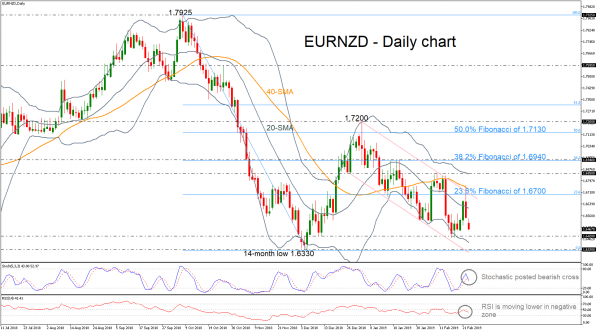EURNZD opened with a negative gap today continuing the negative movement that started yesterday, following the bounce off the 40-day simple moving average (SMA). Also, the price has been developing within a descending channel over the last couple of months, as the price found a strong obstacle on the 1.7200 psychological level.
Technical indicators in the daily timeframe are reversing back to the downside. The stochastic oscillator is turning lower after the bearish cross within the %K and %D lines, while the RSI indicator is pointing down in the bearish area.
Further losses should see the immediate support level of 1.6420 before resting at the December 14-month low of 1.6330. A drop below this region would reinforce the bearish structure in the medium term and open the way towards the next key support level of 1.6140, identified by the bottom on September 2017.
In the event of an upside reversal, the mid-level of the Bollinger Band could be the immediate resistance to look for, currently at 1.6610. More gains could send prices towards the 23.6% Fibonacci retracement level of the downleg from 1.7925 to 1.6330, near 1.6700. A break above this level would take the pair above the 40-day simple moving average towards the 1.6850 resistance.
In the medium-term picture, euro/kiwi is trying to extend its bearish view, posting a negative tendency. A new lower low below 1.6330 would confirm this structure.













